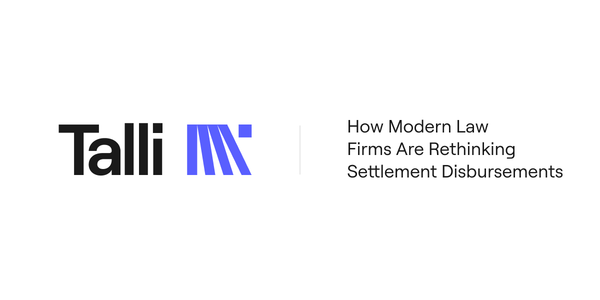The Final Chapter in Class Action Settlements
Most people think the case ends when the money goes out. But for claims administrators, plaintiffs' counsel, and the courts, the real work begins. The critical final stage - Post-Distribution Accounting (PDA) - ensures transparency and accountability in how settlement funds actually reach class members:
- How many class members actually got paid?
- How much of the settlement was left on the table?
- What went wrong — and more importantly, how do you prove what went right?
Post-Distribution Accounting (PDA) — is the often-overlooked final chapter in class action litigation, and for many firms, it’s where cases fall apart in hindsight.
The Hidden Compliance Requirement
Post-Distribution Accounting is a transparency mechanism requiring claims administrators to report detailed metrics about settlement fund disbursement. While not universal, these requirements are becoming increasingly stringent, particularly in federal courts.
For example, The Northern District of California has pioneered formal PDA requirements, mandating a comprehensive report within 21 days after all settlement funds are disbursed.
This report must detail everything from the total settlement amount to the percentage of class members who received payment.
What Courts Want to See
A complete Post-Distribution Accounting typically includes:
- Who got paid (and who didn’t)
- How much was distributed
- How many checks bounced, went stale, or were never claimed
- What happened to the leftovers (e.g. cy-près, reversion, escheatment)
- Administrative costs and attorney fees
- Any problems encountered — from fraud to system failures
This level of detail allows courts to evaluate whether the settlement actually delivered meaningful benefits - and whether future settlements with similar structures should be approved.
Why Distribution Often Falls Short
The reality of settlement administration is far messier than most realise.
Settlement funds frequently go unclaimed for various reasons:
In claims-made settlements, many eligible class members never file. Even in settlements where payments are automatically sent, a significant percentage of checks are never cashed. Studies have found that in many consumer class actions, only a small fraction of class members ever claim their share, with claims rates often in the single-digit percentages (US Federal Trade Commission study).
This creates both financial and compliance challenges. Administrators must track these uncashed amounts and follow court-approved plans for handling residual funds - whether through a second distribution, cy-près donation, or other disposition.
Even with good intentions, distribution gets messy:
- Unclaimed funds pile up. Bounced emails, stale checks, and disconnected phone numbers make millions vanish into limbo.
- Fraud is on the rise. Mass-produced fake claims are now a known risk.
- Errors go unnoticed. One digit wrong in a bank account = no payout, no record, no trust.
And if you’re not measuring this — or worse, reporting it — it can damage your firm’s credibility in future cases. Courts are beginning to expect more than “we tried.”
Modern Solutions for a Modern Problem
Settlement administration technology, like Talli, aims to address these challenges. It starts before the money even moves - by increasing claimant awareness and participation through multi-channel notice delivery.
Talli enables law firms to send personalised emails, text messages, and even push-style reminders to ensure class members actually see and understand the settlement.
Better notice means higher engagement and take up rates, fewer unclaimed funds, and fewer headaches downstream.
From there, one of the most significant challenges in Post-Distribution Accounting is consolidating data across systems. Claims administrators typically manage claimant information in their own CRM or case management system, while payment data lives in a separate distribution platform—creating a disconnect when it's time to prepare court-mandated reports.
Talli's External API addresses this challenge by enabling real-time data synchronisation between payment systems and administrative platforms.
Through this integration:
- Critical payment data flows automatically into the administrator's CRM system, including:
- Claimant ID
- Payment status
- Distribution amount
- Payment method selected
- Redemption timestamps
- The synchronised data then feeds directly into automated Post-Distribution Accounting reports, eliminating manual compilation and cross-referencing.
This bidirectional data flow transforms what was once a labor-intensive reporting process into an automated function that produces court-ready documentation with minimal administrative overhead.
Talli's live connection between distribution data and administrative systems, ensures administrators always have the most current information available for both operational decisions and compliance reporting.
When PDA Reveals Distribution Problems
Post-distribution reports sometimes reveal uncomfortable truths. In one TCPA class action settlement (Tannlund v. Real Time Resolutions), approximately 35% of class members never cashed their settlement checks, leaving over $260,000 in unclaimed funds that required judicial intervention to determine their disposition.
Such revelations can impact future cases. Courts may decline to approve similar settlement structures or require enhanced notice plans. They might also reduce attorney fee awards if the actual benefits delivered to the class fall short of projections.
Post-Distribution Accounting serves a crucial role in maintaining trust in the class action system. When courts, counsel, and claimants can see exactly what happened after distribution, it builds confidence that the process worked as intended.
For claims administrators and law firms, embracing modern distribution technology makes both PDA compliance easier and improves the outcomes that will be reported.
By focusing on successful delivery and redemption from the start, the final accounting becomes not just a compliance exercise, but a demonstration of a settlement well executed.

